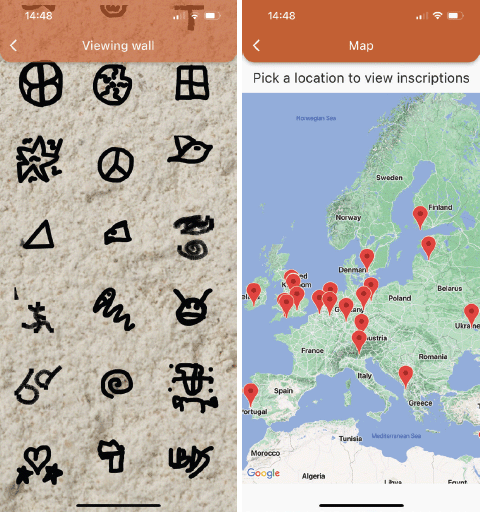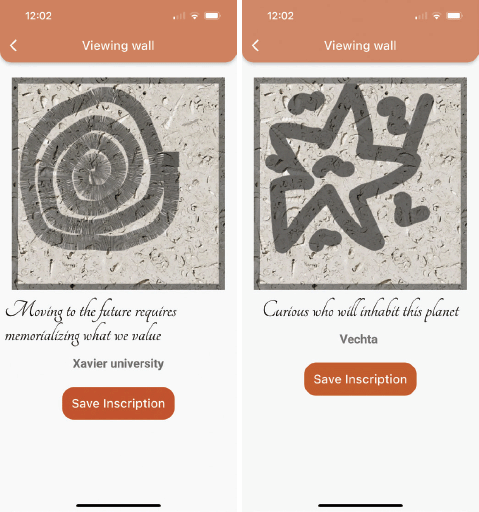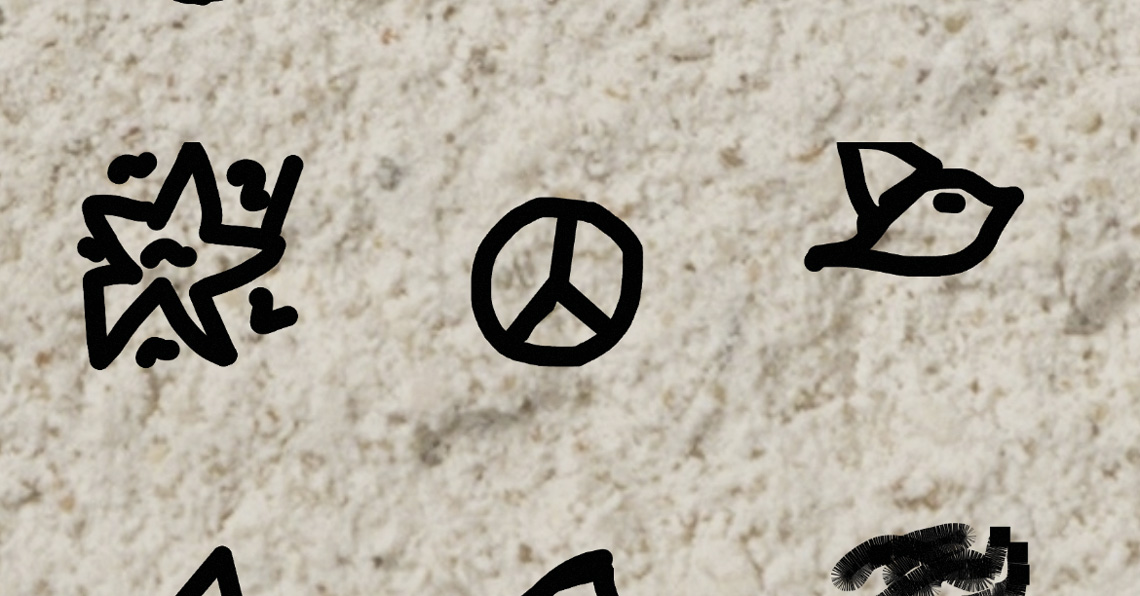The MEMO Project Inscription App: Fostering Community Engagement on Biodiversity Loss
Issue: XXXI.2 March - April 2024Page: 9
Digital Citation
Authors:
Kieran Woodward, Thomas Johnson, Bradley Patrick, Michael Gibbs, Amna Anwar, Eiman Kanjo, Jenny Wüstenberg
The devastating effects of climate change and human activity on the planet's biodiversity have led to a mass extinction event, which is when species vanish much faster than they are replaced. This is defined as about 75 percent of the world's species being lost in a short period of geological time—less than 2.8 million years [1]. The Eden Portland project (https://www.edenproject.com/new-edens/eden-project-portland-uk) aims to build relationships between people and the natural world through an immersive experience in a subterranean labyrinth of mine tunnels that are the results of excavating the same Portland stone that was used to construct St. Paul's Cathedral in London and the cladding on the UN Headquarters in New York City. Portland stone's durability means that as well as being excellent for building iconic structures, it is also ideal for creating inscriptions and fossil imprints that are long-lasting, helping breathe new life into stories of biodiversity, extinction, and evolution.
As part of this project, an innovative app named MEMO (Mass Extinction Monitoring Observatory) Project Inscription was developed by the Smart Sensing Lab at Nottingham Trent University. The app provides information about the mass extinction event, enabling people to learn about these issues as well as allowing them to draw and submit their own fossil inscriptions to raise awareness (Figure 1). Using their fingers, people can draw lines, shapes, and textures on a virtual stone background to compose their artistic inscription on the app, simulating the experience of etching into stone. The app also allows users to write messages, providing a platform for individuals to share their thoughts and feelings about the mass extinction event.
 | Figure 1. Screenshots of the MEMO Project Inscription app's home screen (left), a user creating a new inscription (middle), and the saved inscription (right). |
By laying out information on biodiversity loss, the app primes users to deeply contemplate the issue while the active, creative process of drawing their own inscription brings into focus their emotions, perspectives, and commitments to taking action against extinction. Moreover, as users ideate what to draw that represents their stance on extinction, the very process of artistic creation provokes deeper reflection on how biodiversity loss affects the planet and humanity.
The app is community-driven and designed both for people who are already attuned to the mass extinction event and those who want to learn more. All submissions are uploaded to a central server, where they are displayed in a searchable gallery within the app, allowing all submitted inscriptions to be viewed by anyone who has downloaded the app. Users can scroll through the gallery to view inscriptions from around the world. Tapping on a submission enlarges the image and displays the attached message. Each inscription is tagged with the location where it was created, allowing people to view the geographic spread of the project's impact across the world. An interactive map also shows the marked locations of all inscriptions. Users can zoom in and tap pins to reveal the inscriptions created in a particular area (Figure 2).
 | Figure 2. Screenshots of the MEMO Project Inscription app's viewing wall containing all submitted inscriptions (left) and a map where the inscriptions were created. |
Using their fingers, people can draw lines, shapes, and textures on a virtual stone background to compose their artistic inscription on the app.
The app's community-driven approach facilitates collaboration and idea exchange among users. Rather than functioning solely as a one-way communication tool that displays information, it fosters a sense of collaboration and shared responsibility. By allowing all submitted inscriptions to be viewed, the app promotes a sense of community and shared purpose among users. It also provides a platform for individuals to share their thoughts and feelings about the mass extinction event, creating a space for dialogue (Figure 3). The app was presented at the UN Convention on Biological Diversity Conference of Parties (COP 15) in December 2022 to raise global awareness of the Eden Portland project. Here, approximately 100 people engaged with the app.
 | Figure 3. Examples of virtual inscriptions along with supportive messages submitted on the MEMO Project Inscription app. |
By allowing users to draw and submit their own fossil inscriptions, the app provides a unique and creative way for individuals to engage with the issue of biodiversity loss. It encourages users to think about the impact of human activity on the planet and to take action to address the problem and make a positive impact on Earth's future. The app is a tool for education, awareness-raising, and community-building and is available for download on both the App Store (https://apps.apple.com/gb/app/memo-project-inscription/id6444660336) and Google Play (https://play.google.com/store/apps/details?id=com.memo.inscription&pli=1).
Following on from the app development, we are planning further outreach, starting with schools in the Portland, U.K., area to teach children about the impact of biodiversity loss and help them develop a sense of history in relation to our planet's species. We envision children using the app in school to draw their own virtual inscriptions to raise awareness of the mass extinction event.
1. Begum, T. What is mass extinction and are we facing a sixth one? National History Museum. Feb. 21, 2023; https://www.nhm.ac.uk/discover/what-is-massextinction-and-are-we-facing-a-sixth-one.html
Kieran Woodward is a research associate in pervasive computing at the Smart Sensing Lab, Nottingham Trent University, who conducts research in tinyML, affective computing, and pervasive technologies. He previously completed his Ph.D. at Nottingham Trent University exploring the development of technological solutions for mental well-being monitoring. [email protected]
Thomas Johnson is a lecturer in computer science and conducts research in the Smart Sensing Lab at Nottingham Trent University. He has recently completed his PhD which focused on air quality impact in urban environments and the impact to momentary mental wellbeing. [email protected]
Bradley Patrick is a Ph.D. student in the Smart Sensing Lab at Nottingham Trent University focusing on edge computing and edge communications. [email protected]
Michael Gibbs is a Ph.D. student in the Smart Sensing Lab at Nottingham Trent University. His research interests include tinyML, edge computing, and model optimization. [email protected]
Amna Anwar is a member of the Smart Sensing Lab at Nottingham Trent University. She completed her Ph.D. in pervasive computing and data science. Her research interests are natural language processing, human-computer interaction, and multimodal sensing. [email protected]
Eiman Kanjo is provost's visiting professor in tinyML and pervasive sensing at Imperial College London. [email protected]
Jenny Wüstenberg is a professor of history and memory studies at Nottingham Trent University. Her research interests concern the contentious politics of memory, memory and democracy, slow-moving change such as biodiversity loss, and the memory of family separation policies. [email protected]
Copyright held by authors
The Digital Library is published by the Association for Computing Machinery. Copyright © 2024 ACM, Inc.


